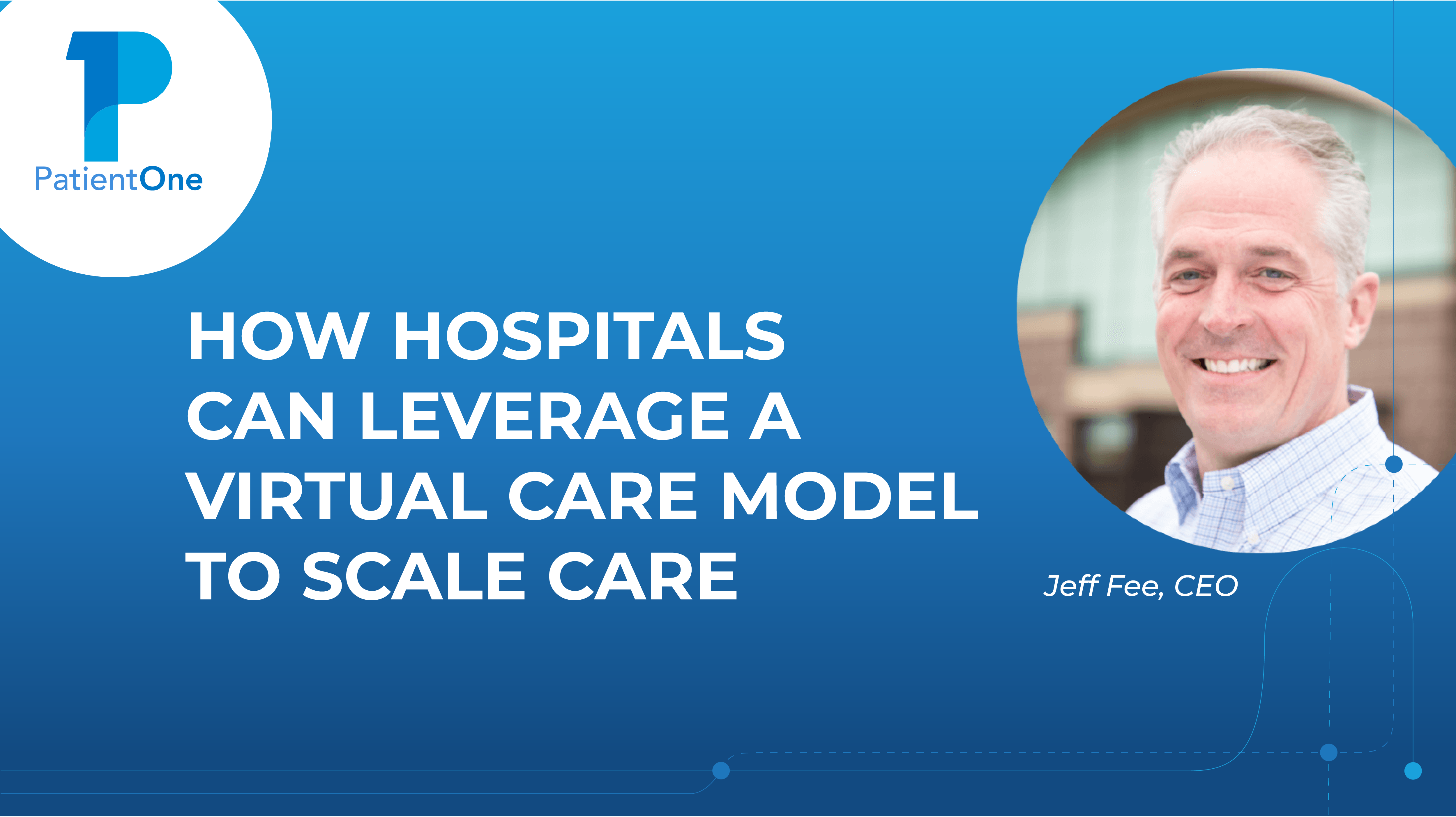Blog
Our latest news and thoughts
- All Posts
-
- Healthcare
- Remote Patient Monitoring
- Connected Care
- Patient Satisfaction
- Digital Innovation
- Standard of Care
- CMS
- Connected Health Devices
- Medicare
- Reducing Expenses
- Connected Health
- Patient Provider Relationship
- Bundled Payments
- Bundled Payments for Care Improvement
- Clinical Empathy
- Coronavirus
- Entrepreneurship
- Optimize Costs
- Physician Burnout
- Revenue
How Hospitals Can Leverage a Virtual Care Model to Scale Care
Topics: Remote Patient Monitoring, Patient Satisfaction, Optimize Costs
June 12, 2020
by Jeff Fee, CEO

In my many years as a hospital administrator, what kept me up at night was the ever-expanding brick-and-mortar administration cost for hospitals. In order to stay competitive and serve the needs of the patients in our community, it felt like there was a constant demand to add buildings, offices, and other infrastructure to make quality care possible.
Today, with the impact of COVID-19, there has been a revolutionary shift in the recognized advantages of a virtual care model. This pandemic has given expanded understanding on the importance of a solid virtual care strategy in a hospital setting. It has shed light on the significance of having a method to provide remote care to patients in the safety and comfort of their own home, while reserving in-person visits and resources for those patients who are most in need of them.
Here in Montana, it’s recognized that rural patients often experience difficulty in traveling long distances to receive care, and that the ability to effectively extend remote care can improve the chances that these patients will follow-up to receive the care they need.
Rural locations are also more likely to experience staff limitations, and having the right systems in place to allow staff to maximize their resources can make all the difference – it can, quite literally, save lives.
After so many years assisting hospitals from the inside-out, it’s very exciting for me to be on the outside looking in. This perspective provides valuable tactical insight on ways for hospitals to decrease their infrastructure cost, stay competitive, and maintain profitability – all while providing better care to patients in the community they serve.
Although there’s been a rise in telehealth during COVID-19, many telehealth platforms still require a large amount of manpower to run successfully. A nurse or care manager can only make a finite number of phone calls in a workday – because of this limitation, what patients are getting missed, and therefore not getting the care they need? How much of the nurse or care manager’s valuable time is spent playing phone tag, or coaching patients through technical difficulties?
We have to ask - what residual issues are rising up due to these time and labor-intensive models? The possibility of care manager burnout is a real one, as is a gap in patient satisfaction.
Issues like this were kept in mind as the PatientOne platform was created and feedback continues to iteratively inform improvements. The combination of intuitive, easy-to-adopt remote patient monitoring and automated care management functions allow practices and hospital systems to perpetuate a force multiplier that exponentially expands the reach of what previously appeared to be finite resources.
For example, in pilot clinics, nurses who were previous only able to manage five patients a day can now effectively manage over fifty patients a day with PatientOne’s streamlined tools.
PatientOne is scalable in a way that allows process improvements to utilize each member of your team to their full capacity, complimenting and supporting their manual efforts, rather than burdening them with bottlenecks and difficulties.
This is the backbone of our system – a force multiplier that lays the groundwork for better patient outcomes, lower costs, and the dual benefit of improved patient and clinician experience.
If you’d like to see how PatientOne can impactfully benefit your practice or hospital directly, please schedule a demo today.



